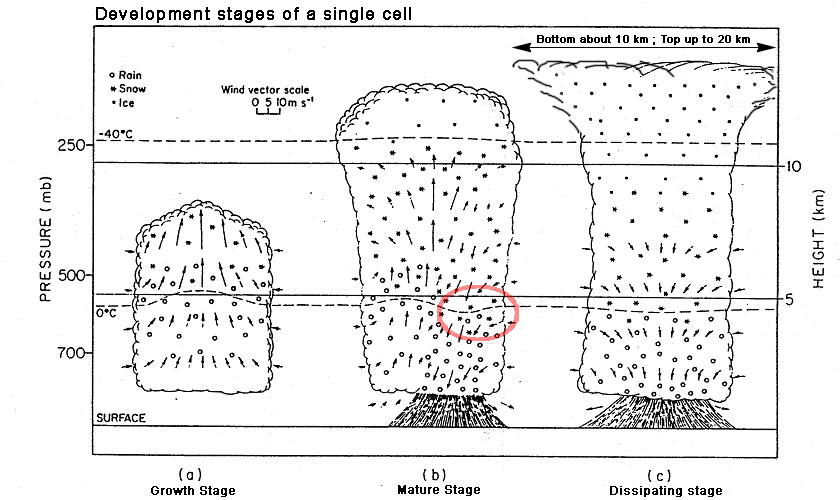
Single cells are the smallest and simplest thunderstorm structures. They have a short lifespan of 30min to 1h. In the growth stage (see fig. a) the tops of a Cumulus-Congestus ascent in a strong "updraft" quickly to the upper troposphere. In the mature stage the Cu develops to a Cb Calvus (see fig. b) and later to a Cb Capillatus with a broad anvil which can have a diameter of up to 20 km. Its cirrus cloudiness often outlast the dissipating stage (see fig. c).
The starting rainfall in the mature stage causes a "downdraft" of cold air by mechanical entrainment (see fig. b), marked region, cell moves from right to left). This cooled air is produced by melting iced and evaporating liquided precipitation elements. A temperature contrast between downdraft and updraft develops. At this stage the updraft is two times higher than the downdraft. However, the downdraft transports cold air to the surface layer, where a local "gustfront" develops at the transition zone to the warm air. In the further development the cold air at the surface layer disrupts the warm air updraft from the ground and the thunderstorm cell breaks down. The dissipating stage (see fig c) begins where rain falls out and the cloud begins to dissolve.
Single cells develop in regions of low wind speed and weak horizontal temperature contrasts. No vertical wind turning is noticable.
References
- Jacobs, W.: Nutzen von Satellitendaten für Wetterüberwachung und -prognose. Lecture notes, March 2007.
- Manual of Synoptic Satellite Meteorology